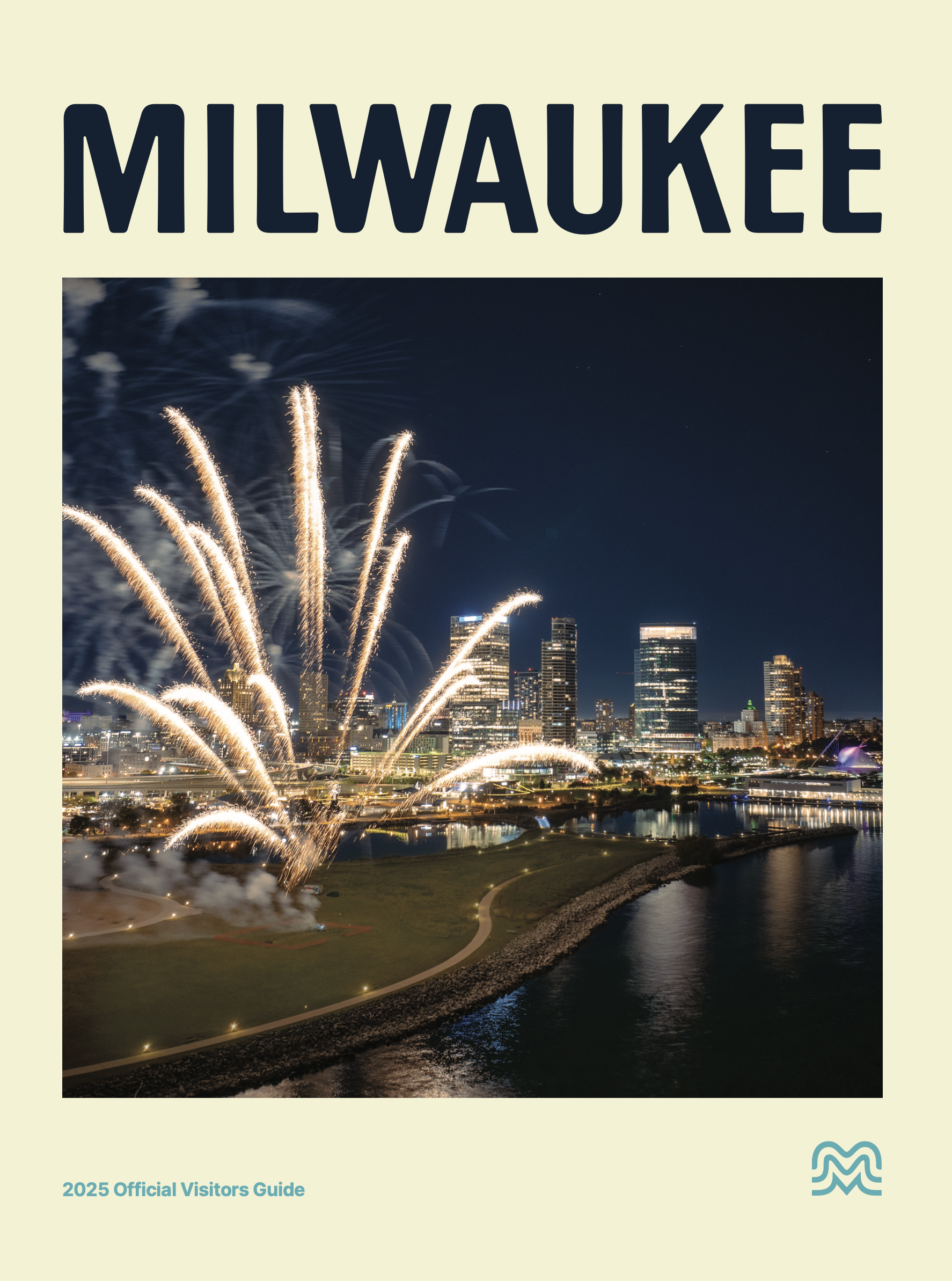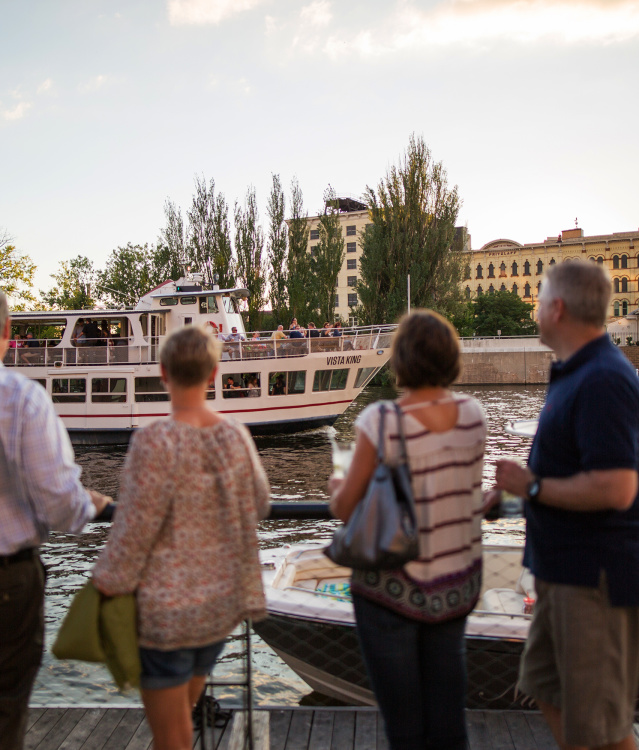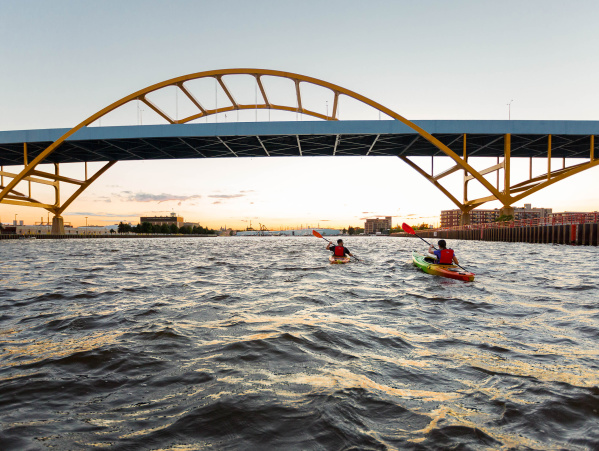The Milwaukee River Though the Years
Like a vibrant ribbon, the Milwaukee River, with its sidewalk cafes, shops, public art, green spaces, and special events, has defined development in downtown Milwaukee. It's a transformation that began in the early 1990s when the Milwaukee RiverWalk District formed in partnership with the City of Milwaukee.
Milwaukee has reshaped the riverfront, but before that, the river shaped the city.
Hundreds of years ago fur traders and French explorers navigated the Milwaukee River to trade with the Native American tribes who lived along its banks. Those early settlements have long since been replaced by a modern and cosmopolitan cityscape. What hasn't changed is the important role the river plays in Milwaukee's enviable and casual waterfront lifestyle.
The river has become a popular urban waterway for outdoor enthusiasts who enjoy kayaking, canoeing, stand-up paddling, and pleasure boating — right in the heart of the city. Warmer months mean a steady stream of tour boats offering everything from history and architecture tours to a pub crawl by boat.
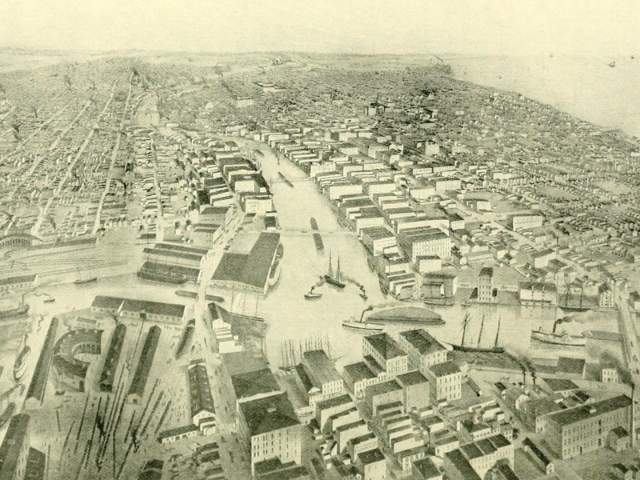
Bridge Wars
The early settlers of each community had strong partisan feelings and engaged in fierce competition to keep their settlements separate.
Milwaukee's location at the confluence of three rivers – the Milwaukee, Menomonee, and Kinnickinnic – provided natural boundaries for the original three founders. Shrewd businessman Byron Kilbourn established Kilbourntown on the west side of the Milwaukee River; former fur trader Solomon Juneau established Juneautown east of the Milwaukee River; and George Walker established a trading post south of the Milwaukee River in what later became known as Walker's Point.
The early settlers of each community engaged in fierce competition to keep their settlements separate. Juneau and Kilbourn even built street grids that intentionally did not line up. (To this day some of Milwaukee's downtown bridges are on a diagonal, often posing visibility issues for boaters.)
On May 8, 1845, angry West Siders destroyed the west side of the Juneau Avenue Bridge and damaged the west side of the Wells Street Bridge, touching off what is known as the "Bridge Wars." East Siders retaliated with the destruction of the Wisconsin Avenue Bridge and threats to destroy the dam across the Milwaukee River. Armed brawls broke out between the inhabitants of the two towns, resulting in several serious injuries.
The Bridge War ended in a truce, but tensions remained until January 31, 1846, when the legislature passed a charter establishing a unified City of Milwaukee.
Today's Milwaukee River winds through a vibrant ribbon of development filled by sidewalk cafes, shops, public art, green spaces, and special events. It's a transformation that began in the early 1990s when the Milwaukee RiverWalk District formed in partnership with the City of Milwaukee.
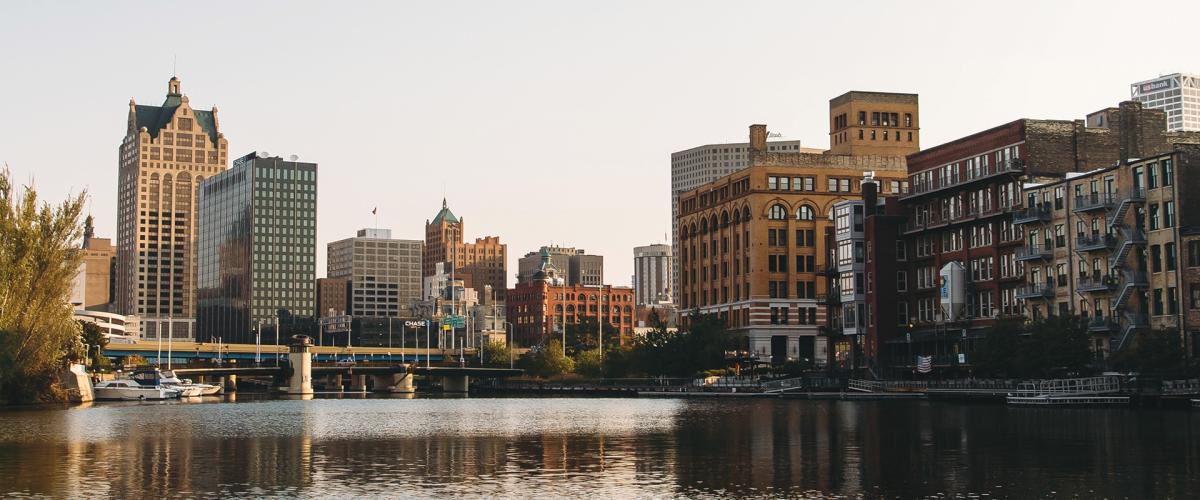
New Development
Today Milwaukee's RiverWalk is a shining example of public and private partnership that has turned the river corridor into a lively commercial, residential, and entertainment center.
The RiverWalk connects three downtown neighborhoods through an approximately 20-block pedestrian promenade on either side of the Milwaukee River. The downtown RiverWalk runs through the heart of the city, past gleaming skyscrapers, hotels, and restaurants.
To the south, it connects to the Historic Third Ward. This neighborhood is often likened to a miniature "SoHo," filled with 19th-century architecture, boutique shops, art galleries, and thriving nightlife.
The Beerline "B" makes up the northernmost portion of the River Walk. Milwaukee's brewing heritage is evident here. It's found in the gleaming, Cream-City brick buildings of the former Schlitz Brewery to the riverside home of Lakefront Brewery, where award-winning craft brewers carry on a cherished Milwaukee tradition.
While each RiverWalk segment has a distinct personality, they are unified by art – in the form of both permanent and changing exhibitions. This outdoor gallery adds to the natural beauty and ambience to be experienced along the way.
More on Milwaukee's Growth & Development
Did you know that there are 16 bridges along the Milwaukee River from the northernmost point of the RiverWalk — the Humboldt Street Bridge — to the southern end — the Milwaukee…



